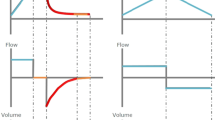Abstract
Objectives: A common experimental model is necessary to assess therapeutic intervention in lung preservation. This study was designed to establish lung preservation in an ex vivo rat model that would enable post-storage lung function to be stably evaluated during the 2 hours following reperfusion.Subjects and Methods: Lungs isolated from Sprague-Dawley rats (n=36) were flushed and stored in University of Wisconsin solution at 4°C for the following periods: Group 1: no storage (n=12); Group 2: 4 hours (n=8); Group 3: 18 hours (n=8); and Group 4: 24 hours (n=8). After storage in University of Wisconsin solution, all lungs were reperfused with homologous venous blood exsanguinated from donor rats using a pulsatile perfusion system. Pulmonary variables, including lung airway resistance, dynamic lung compliance, total pulmonary vascular resistance, and blood gas analysis, were assessed during reperfusion.Results: All lungs stored for 24 hours failed within 1 hour of reperfusion. Lungs stored for up to 18 hours survived 2-hour reperfusion. pO2 in groups 1 to 3 (87.1 ± 3.5, 89.7 ± 2.4, and 80.6 ± 6.4, pO2 mmHg at 30 minutes) was similar during reperfusion, but that in group 4 (49.5 ± 4.6 mmHg, at 30 minutes) deteriorated within 30 minutes after reperfusion onset. Lung airway resistance, dynamic lung compliance, and shunt fraction also deteriorated in group 4, whereas these variables were similar in groups 1, 2, and 3 during reperfusion.Conclusions: These results indicate that this experimental model provided a reliable evaluation of preserved lung function after 18-hour cold storage. Any therapeutic intervention for extending storage periods or ameliorating poststorage lung function is easily tested using this system.
Similar content being viewed by others
References
Wang LS, Yoshikawa K, Miyoshi S, Nakamoto K, Hsieh CM, Yamazaki F, et al. The effect of ischemic time and temperature on lung preservation in a simple ex vivo rabbit model used for functional assessment. J Thorac Cardiovasc Surg 1989; 98: 333–42.
Ueno T, Yokomise H, Oka T, Puskas JD, Mayer E, Slutsky AS, et al. The effect of PGE1 and temperature on lung function following preservation. Transplantation 1991; 52: 626–30.
Yamazaki F, Yokomise H, Keshavjee SH, Miyoshi S, Cardoso PF, Slutsky AS, et al. The superiority of an extracellular fluid solution over Euro-Collins’ solution for pulmonary preservation. Transplantation 1990; 49: 690–4.
Oka T, Puskas JD, Mayer E, Cardoso PF, Shi S, Wisser W, et al. Low-potassium UW solution for lung preservation. Transplantation 1991; 52: 984–8.
Sasaki S, Yasuda K, McCully JD, LoCicero J. Development of an isolated, pulsatile blood-perfused rat lung model for evaluating the preserved lung functions. Surg Today 1997; 27: 1154–9.
Date H, Matsumura A, Manchester JK, Obo H, Lima O, Cooper JM, et al. Evaluation of lung metabolism during successful 34-hour canine lung preservation. J Thorac Cardiovasc Surg 1993; 105: 480–91.
Kaiser LR, Cooper JD. The current status of lung transplantation. Adv Surg 1992; 25: 259–307.
Novick RJ, Menkis AH, McKenzie FN. New trends in lung preservation: A collective review. J Heart Lung Transplant 1992; 11: 377–92.
Bresticker MA, LoCicero J, Oba J, Greene R. Successful extended lung preservation with UW solution. Transplantation 1992; 54: 780–4.
Kawahara K, Ikari H, Hisano H, Takahashi T, Honshou S, Ayabe H, et al. Twenty-four-hour canine lung preservation using UW solution. Transplantation 1991; 51: 584–7.
Miyoshi S, Shimokawa S, Schreinemakers H, Date H, Weder W, Harper B, et al. Comparison of the University of Wisconsin preservation solution and other crystalloid perfusates in a 30-hour rabbit lung preservation model. J Thorac Cardiovasc Surg 1992; 103: 27–32.
Blann AD, Taberner DA. A reliable marker of endothelial cell dysfunction: does it exist? Brit J Haematol 1995; 90: 244–8.
Boyle EM, Pohlman TH, Cornejo CJ, Verrier ED. Endothelial cell injury in cardiovascular surgery: Ischemia-reperfusion. Ann Thorac Surg 1996; 62: 1868–75.
Malik AB, Lo SK. Vascular endothelial adhesion molecules and tissue inflammation. Pharmacol Rev 1996; 48: 213–29.
Author information
Authors and Affiliations
Rights and permissions
About this article
Cite this article
Sasaki, S., Yasuda, K. & LoCicero, J. Reliable 18-hour lung preservation with University of Wisconsin solution. Jpn J Thorac Caridovasc Surg 47, 99–103 (1999). https://doi.org/10.1007/BF03217951
Received:
Accepted:
Issue Date:
DOI: https://doi.org/10.1007/BF03217951




